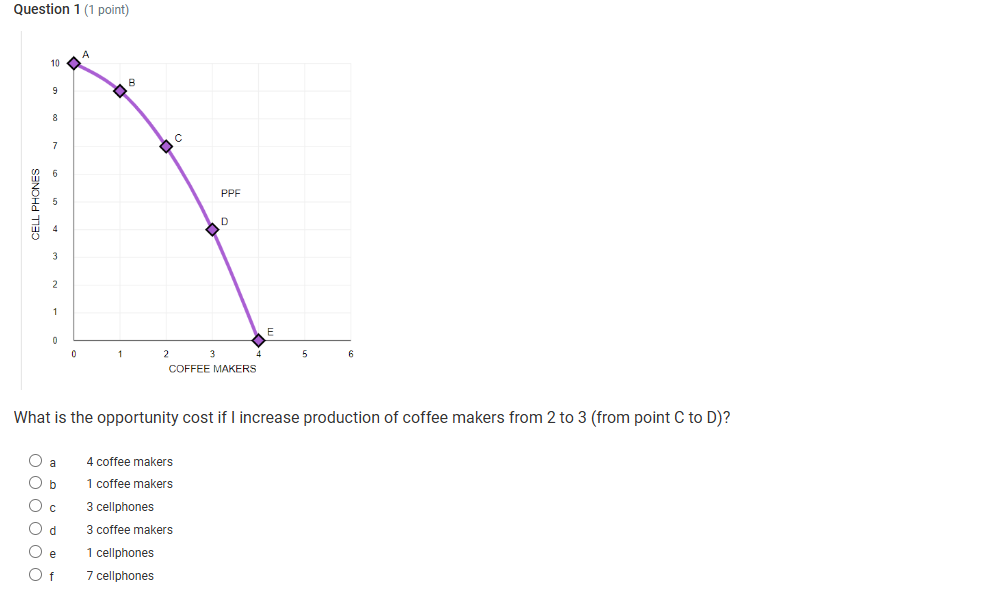What is the opportunity cost if I increase production of coffee makers from 2 to 3 (from point C to D)?

Understand the Problem
The question is asking to calculate the opportunity cost when increasing the production of coffee makers from 2 to 3, based on a given production possibilities frontier (PPF) graph. The key concepts involved are opportunity cost and production levels.
Answer
The opportunity cost of increasing production from 2 coffee makers to 3 is 1 cell phone.
Answer for screen readers
The opportunity cost when increasing production of coffee makers from 2 to 3 is 1 cell phone.
Steps to Solve
-
Identify Production Levels We need to find out how many cell phones are produced at points C and D on the PPF graph when coffee makers are produced.
-
Extract Values from the Graph From point C, when 2 coffee makers are produced, look at the y-axis where cell phones are plotted. Assume it is 7 cell phones. From point D, when 3 coffee makers are produced, look at the y-axis again. Assume it is 6 cell phones.
-
Calculate Opportunity Cost The opportunity cost is the difference in cell phones produced when moving from point C to point D.
Calculate it as follows: $$ \text{Opportunity Cost} = \text{Cell Phones at C} - \text{Cell Phones at D} $$ $$ \text{Opportunity Cost} = 7 - 6 = 1 $$
- Identify the Answer The opportunity cost of increasing production from 2 coffee makers to 3 coffee makers is 1 cell phone.
The opportunity cost when increasing production of coffee makers from 2 to 3 is 1 cell phone.
More Information
Opportunity cost is an important economic concept that refers to the value of the next best alternative foregone when a choice is made. In this case, increasing the production of coffee makers means sacrificing the ability to produce cell phones.
Tips
- Confusing the number of coffee makers with the number of cell phones. It’s essential to focus on the production of cell phones when calculating opportunity costs.
- Overlooking the values on the graph which could lead to incorrect calculations.
AI-generated content may contain errors. Please verify critical information